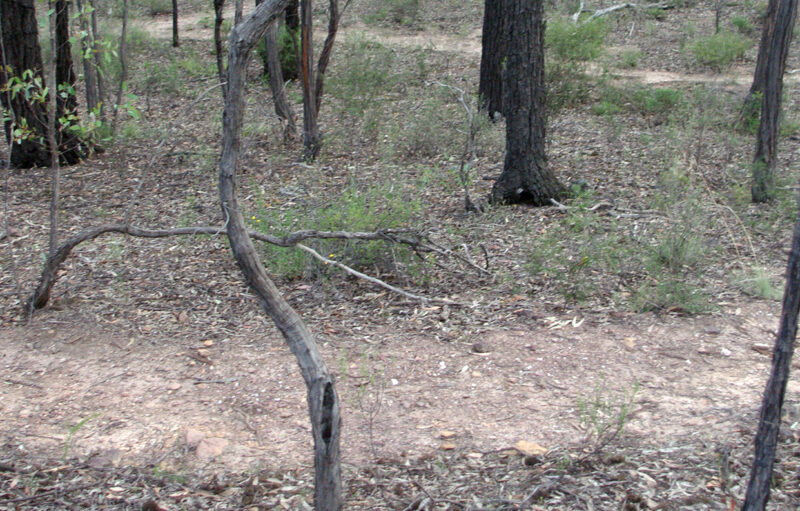PARK WATCH Article June 2024 |
Glossy Black Cockatoos are threatened by planned burns in East Gippsland says Louise Crisp from Gippsland Environment Group (GEG)
Few people have seen the gentle reclusive Glossy Black Cockatoo (Calyptorhynchus lathami) with its magnificent red tail feathers and quiet calls. To observe a family of ‘Glossies’ hanging out together in a Black She-oak tree is a magical experience.
The unburnt coastal forest between Colquhoun (near Lakes Entrance) to the Snowy River at Marlo is the heartland of Victoria’s Glossy population. Numbering a tiny 35 to 40 individuals, they’re listed as Critically Endangered in Victoria and Vulnerable nationally.
Glossy Black Cockatoos have a very specialised diet. In East Gippsland they feed exclusively on seeds from the cones of Black She-oak trees (Allocasuarina littoralis), also known as She-oak. Black She-oaks often occur as extensive stands within coastal Lowland Forest. The chewed cones, known as orts, can be found under Glossy’s feed trees.
Black She-oaks are particularly susceptible to fire. High intensity fires kill them, and even low intensity fire triggers the cones to open and shed their seed. Glossies will not feed on seeds on the ground.
The Black Summer bushfires in Victoria had an extreme impact on the Glossies’ food supply. The bushfires burnt through two-thirds of Glossy Black Cockatoo modelled habitat, with one quarter of their habitat burnt at high severity. The forests east of Orbost were the worst affected.
Young regenerating Black She-oak take five to 20 years to produce viable seed. Consequently, every stand in unburnt forest in East Gippsland is now critical for the survival of the Glossy population.
Unbelievably, Forest Fire Management Victoria (FFMV) has scheduled planned burns across a huge area of this unburnt coastal refuge. Over the next three years, they plan to burn approximately 11,000 hectares of forest containing Glossy Black Cockatoo habitat, including in parks and reserves. In this current year, FFMV is targeting approximately 4,000 hectares.
Needless to say, these burns will have a significant impact on their available food supply.
Glossies nest in old hollow trees which are especially vulnerable to collapse from fire. Identified nest trees will be protected by a 250m radius buffer, but very few nest sites have been recorded. Inevitably, unidentified nest trees will be destroyed in planned burns. Research by the Department of Energy, Environment and Climate Action (DEECA) reports that 26 per cent of all habitat trees reached by fire in a planned burn will collapse.
After the 2019-20 bushfires, DEECA and Birdlife Australia carried out extensive surveys for Glossies in the unburnt coastal forest. They mapped Black She-oak stands and recorded Glossy feed trees. FFMV has access to all that information, yet this has not deterred them from burning.
Gippsland Environment Group has undertaken Glossy Black Cockatoo surveys in the planned burns and recorded Glossies and their feed trees. We reported these records to DEECA and FFMV and advocated for their protection but – with only one exception – FFMV still intends to burn Black She-oak. FFMV staff have admitted to GEG there will be a loss of Glossy habitat.
When an appeal was made to the Office of the Conservation Regulator (OCR), GEG was advised that OCR does not regulate DEECA fire management activities.
We encourage concerned Victorians to write to the Victorian Minister for Environment, Steve Dimopoulos, and demand that FFMV exclude all Glossy Black Cockatoo habitat from planned burns. We won’t stand by as this critically endangered population is driven to extinction.
Find out more at Gippsland Environment Group geg.org.au/fire/glossies
- Read the latest full edition of Park Watch magazine
- Subscribe to keep up-to-date about this and other nature issues in Victoria
- Become a member to receive Park Watch magazine in print
